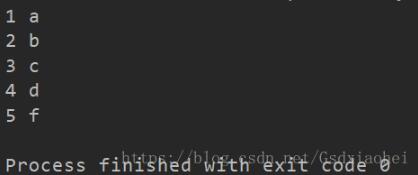您好,登录后才能下订单哦!
密码登录
登录注册
点击 登录注册 即表示同意《亿速云用户服务条款》
Python的for循环十分灵活,使用for循环我们可以很轻松地遍历一个列表,例如:
a_list = ['z', 'c', 1, 5, 'm'] for each in a_list: print(each)
运行结果:

但是,有时遍历一个列表并不能满足我们的需求,在一些特殊的场合,我们可能会需要遍历两个甚至多个列表,例如,有两个列表,第一个列表存放的是人物的姓名,第二个列表存放的是人物的年纪,他们之间的关系是对应的,这时候该怎么办呢?
①使用zip()函数 (推荐)
name_list = ['张三', '李四', '王五'] age_list = [54, 18, 34] for name, age in zip(name_list, age_list): print(name, ':', age)
运行结果:

下面了解一下zip()函数:
name_list = ['张三', '李四', '王五'] age_list = [54, 18, 34] print(zip(name_list, age_list)) print(type(zip(name_list, age_list))) print(*zip(name_list, age_list)) print(list(zip(name_list, age_list))) print(dict(zip(name_list, age_list)))
运行结果:

可以看出,直接输出zip(list1, list2)返回的是一个zip对象, 在前面加上*, 它输出了三个元组, 正是两个列表中的三个数据一一对应的结果,我们可以将此对象直接转化成列表,甚至字典!
当然,使用zip()来遍历三个及以上的列表也是可行的:
list1 = [1, 2, 3, 4, 5] list2 = ['a', 'b', 'c', 'd', 'f'] list3 = ['A', 'B', 'C', 'D', 'F'] for number, lowercase, capital in zip(list1, list2, list3): print(number, lowercase, capital)
运行结果:

②利用下标
既然列表的内容是一一对应的,我们可以自己设置好一个下标,同样使用一个for循环也可以遍历。
list1 = [1, 2, 3, 4, 5] list2 = ['a', 'b', 'c', 'd', 'f'] n = 0 for each in list1: print(each, list2[n]) n += 1
运行结果:

同样也得到了我们想要的效果~
以上这篇Python同步遍历多个列表的示例就是小编分享给大家的全部内容了,希望能给大家一个参考,也希望大家多多支持亿速云。
免责声明:本站发布的内容(图片、视频和文字)以原创、转载和分享为主,文章观点不代表本网站立场,如果涉及侵权请联系站长邮箱:is@yisu.com进行举报,并提供相关证据,一经查实,将立刻删除涉嫌侵权内容。